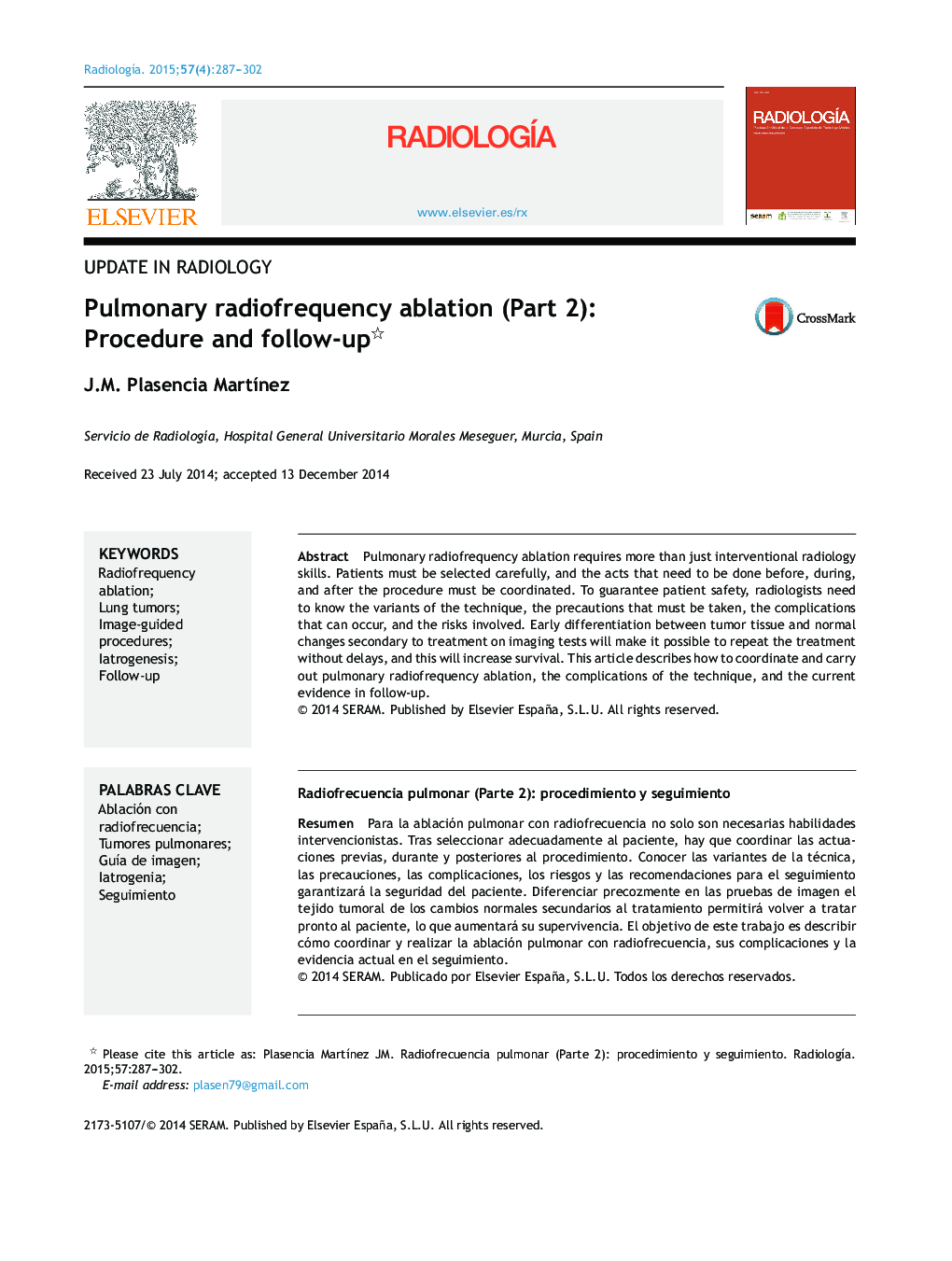| Article ID | Journal | Published Year | Pages | File Type |
|---|---|---|---|---|
| 4246428 | Radiología (English Edition) | 2015 | 16 Pages |
Pulmonary radiofrequency ablation requires more than just interventional radiology skills. Patients must be selected carefully, and the acts that need to be done before, during, and after the procedure must be coordinated. To guarantee patient safety, radiologists need to know the variants of the technique, the precautions that must be taken, the complications that can occur, and the risks involved. Early differentiation between tumor tissue and normal changes secondary to treatment on imaging tests will make it possible to repeat the treatment without delays, and this will increase survival. This article describes how to coordinate and carry out pulmonary radiofrequency ablation, the complications of the technique, and the current evidence in follow-up.
ResumenPara la ablación pulmonar con radiofrecuencia no solo son necesarias habilidades intervencionistas. Tras seleccionar adecuadamente al paciente, hay que coordinar las actuaciones previas, durante y posteriores al procedimiento. Conocer las variantes de la técnica, las precauciones, las complicaciones, los riesgos y las recomendaciones para el seguimiento garantizará la seguridad del paciente. Diferenciar precozmente en las pruebas de imagen el tejido tumoral de los cambios normales secundarios al tratamiento permitirá volver a tratar pronto al paciente, lo que aumentará su supervivencia. El objetivo de este trabajo es describir cómo coordinar y realizar la ablación pulmonar con radiofrecuencia, sus complicaciones y la evidencia actual en el seguimiento.
